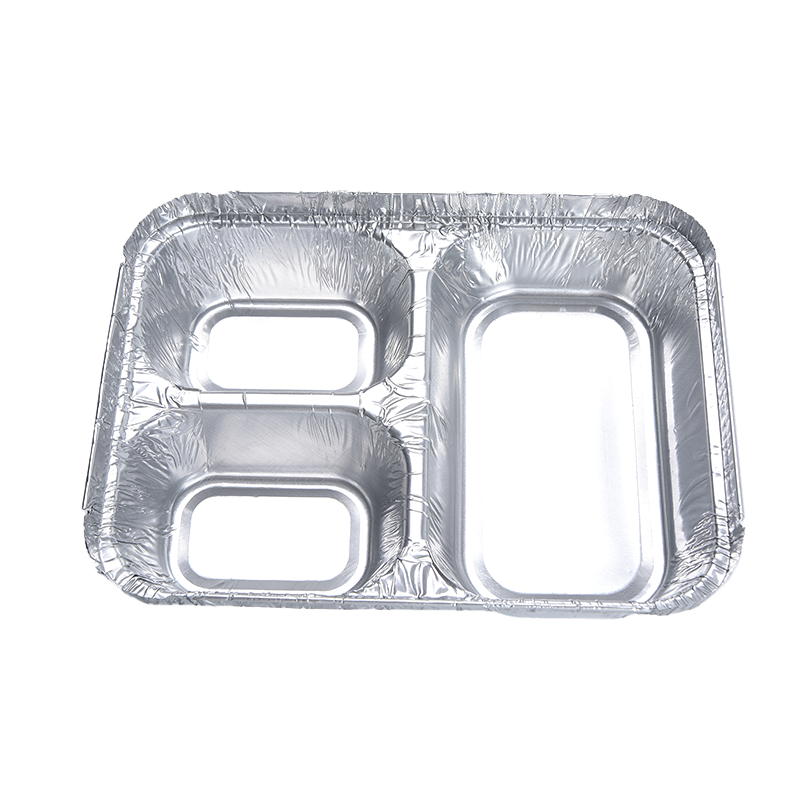Can aluminum foil tableware be reused?
Industry News-Whether aluminum foil tableware can be reused isn't a blanket statement. It depends not only on the design and quality of the tableware itself, but also on proper use and cleaning.
Content
1. Safe cleaning is essential for reuse
Regardless of the type of aluminum foil tableware, safe reuse requires extremely thorough cleaning.
Prompt cleaning: Clean as soon as possible after use to avoid food residue and prevent bacterial growth.
Gentle scrubbing: Use a soft cloth to clean, avoiding hard objects like steel wool to avoid scratching the surface and increasing the risk of aluminum precipitation.
Thorough rinsing: Ensure there are no food or detergent residues. Pay special attention to creases and crevices.
Proper storage: Store in a dry, ventilated area after cleaning.
2. Be aware of these prohibited conditions
For safety reasons, do not use aluminum foil tableware if it shows any of the following:
Significant deformation or damage: The aluminum foil tableware is structurally incomplete, easily harboring dirt and increasing the risk of aluminum migration. Severe scratches or pits on the inner wall: A damaged surface increases aluminum release and makes cleaning difficult.
Stubborn stains or odors persist after cleaning: This may indicate bacterial growth.
Designed for single-use: In most cases, reusing disposable aluminum foil lunch boxes is not recommended.
3. Regarding aluminum migration from aluminum foil tableware
Many people are concerned about aluminum migration into food during use.
Under normal use (such as storing neutral foods and avoiding scratches), aluminum migration from qualified, high-quality aluminum foil lunch boxes is very low, typically well below national safety limits. The World Health Organization (WHO) states that the Provisional Tolerable Intake (PTWI) for aluminum for adults is 2 mg per kilogram of body weight per week. The amount of aluminum ingested through qualified aluminum tableware is well below this safety limit.
Aluminum migration may increase with acidic (such as tomatoes, vinegar, lemons), alkaline, or high-salt foods. If you need to store these foods, avoid using scratched, old lunch boxes and avoid storing them for extended periods. Choosing lunch boxes with a protective coating (such as anodized) can effectively reduce aluminum migration.
4. Daily Use Recommendations
Avoid prolonged food storage: Especially acidic, alkaline, or high-salt foods should not be stored in aluminum foil containers for extended periods of time.
Cooling Before Covering: Hot food should be cooled to room temperature before covering it to prevent moisture accumulation, which can accelerate corrosion of the foil and breed bacteria.
Understand the type of lunch box: Pay attention to whether the aluminum foil lunch box you purchase is labeled "single-use" or "reusable."
Comparison table of characteristics of different types of aluminum foil tableware
| Features | Disposable Aluminum Foil Tableware | Reusable Aluminum Foil Tableware |
| Design Intentions | Designed for Single Use | Designed for Multiple Use |
| Material Thickness | Typically Thin | Typically Thicker, More Durable |
| Surface Treatment | No Special Treatments | May Have Treatments Such as Anodizing |
| Difficulty to Clean | Difficult to Clean Thoroughly, Can Harvest Dirt | Relatively Easy to Clean |
| Safety Risk | High (Difficult to Clean and Disinfect Effectively, Can Harm Bacteria) | Low (With Proper Use and Cleaning) |
| Suitable Applications | Recommended for disposal after takeout, baking, parties, and outdoor activities | Reusable for Daily Home Use, Oven Baking |
| Economical | Lower single-use cost, but higher risk for reuse | The initial purchase cost may be slightly higher, but the product is reusable, making it more economical in the long run |
| Environmental Benefits | Is not environmentally friendly if discarded carelessly; however, it is recyclable | Reuse itself reduces waste and is more environmentally friendly; it can be recycled at the end of its lifecycle |





 English
English 日本語
日本語 عربى
عربى Español
Español












